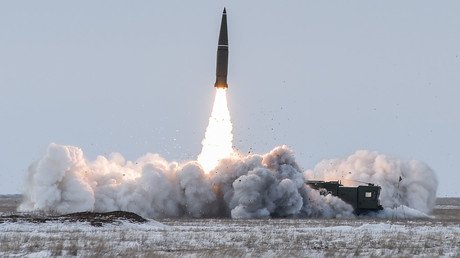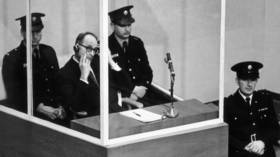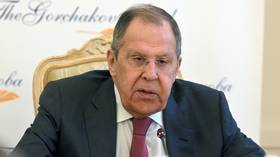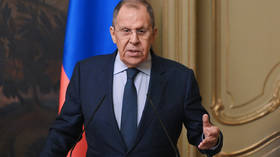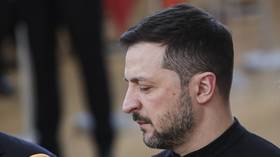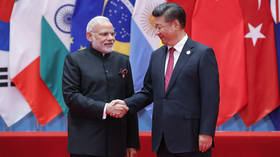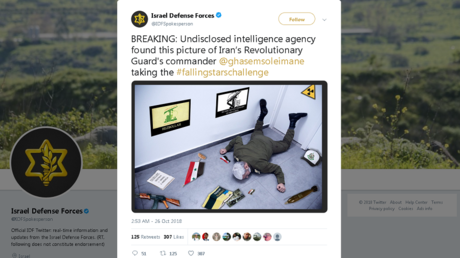Nuclear war: Hypothetical scenario & Russia's strike options
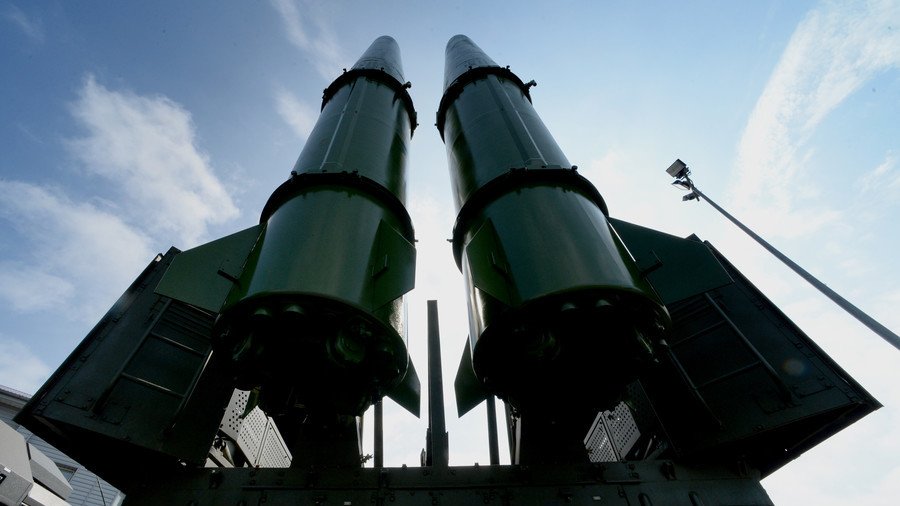
Many believe that the US withdrawal from the INF treaty could heighten the nuclear standoff risks between Russia and America. Some even claim war is inevitable. What are some possible thermonuclear warfare scenarios?
Most political analysts list the sharp deterioration in the military and political situation in various conflict zones as one of the things that could trigger WWIII and an unavoidable nuclear exchange between the US and Russia.
The conflict zones are listed by the experts either in alphabetical order or from the East to the West, making sure not a single potentially dangerous conflict zone is missed. Usually, it goes like this: the Paracel Islands, India and Pakistan, Afghanistan, Iran and Israel, Syria, and so on.
Obviously, this is a very superficial approach. Even the sharpest deterioration in the Syrian conflict is highly unlikely to trigger a massive nuclear attack on Moscow or Washington.
Most of the experts fail to provide specific reasons that could force Russia and the US into a nuclear exchange.
For instance, if we unleash our imagination, we could hypothetically assume that Iran and Israel might exchange nuclear strikes. But even this conflict is unlikely to spread outside the Middle Eastern theater of war to involve all the members of the global nuclear club.
Despite the fact that US-Russia relations have been deteriorating lately, there are no territorial, financial, or ideological contradictions between the two countries that should bring them to a massive nuclear exchange.
Hence, the nuclear war scenario could only be discussed from a technical point of view. In other words, we first of all need to describe the steps of the process and its main characters.
Commander-in-Chief Gives the Green Light
First, let's talk about the decision-making process. Who gives the order to launch nuclear weapons and what does it look like? Popular opinion is that the president has access to some kind of 'red button', and if he presses this button, he will simultaneously deploy intercontinental ballistic missiles and submarine-launched ballistic missiles.
Many people believe this nonsense, and sometimes we even hear it from experts. This is simply not true. In fact, the reality is totally different. The president gives permission to initiate the unlock and launch procedure in a coded message. Different military units handle the actual launch of intercontinental ballistic missiles and submarine-launched ballistic missiles, as well as cruise missiles with nuclear warheads. But before this happens, the warheads are unlocked by special authorization codes.
READ MORE: Apocalypse in 2019: Is Russia-US war possible?
Basically, individual weapons commanders receive a coded order from the president, take the envelopes with five wax seals from their safe, and open it. They compare the information they received from the president with the contents of the envelope, and decode the message to get the unlock code. The code is entered into the warhead control system, and the Unlock / Permission to Launch signs come on.
The president has in his possession the 'nuclear briefcase' that he would use for initiating the sequence. 'Cheget' is the code name for this nuclear briefcase, which in reality is an automatic system for command and control of Russia's Strategic Nuclear Forces called 'Kazbek'. The other two briefcases are carried by the Russian defense minister and the chief of the General Staff.
Some sources say that it takes confirmation from two briefcases to get the unlock and launch authorization codes. Others say all three have to confirm.
This means that nobody in Russia has the sole power to launch nuclear weapons. The US has a similar system in place.
Russia's nuclear strike options
So what are Russia's strike options? In case of a launch on warning, the Integrated Space System (EKS) and the Early Warning System detect a massive launch of ICBMs from US territories and submarine-launched ballistic missiles and calculate target locations inside Russia and their flight time.
The Russian president receives warning of a missile strike. The Russian leadership makes the decision on a launch on warning. Ground, air, and submarine-launched missiles are unlocked with a code, and in 7-9 minutes there will be a massive launch of strategic nuclear weapons from Russia and the adjacent seas. Time is needed to perform these operations.
In case of a retaliatory strike, the scenario is roughly the same, with the exception that the warheads have already struck Russian territory and the systems have registered nuclear explosions.
The worst case scenario in a nuclear strike is decapitating the country's top executive and military command chains, death of the country's political and military leaders and inability to issue orders to launch a nuclear attack.
This could happen, for instance, in case of a Prompt Global Strike that would seek to paralyze the nation's political and military chain of command and destroy military and political leaders.
This is when the Perimeter (or its modern-day namesake) steps in and makes sure the retaliatory strike is completed in full even in the worst case scenario. There is only tentative data on the Perimeter system, aka the Dead Hand. It is believed that it consists of command posts, command ballistic missiles, receivers and an autonomous control and command system (these names are highly speculative).
Following the decision by the Perimeter system to use strategic nuclear weapons (a decision by what is effectively computer intelligence), a command missile (or missiles) is launched. The head of the missile carries a transmitter that sends a signal to all nuclear arms with special receivers to be launched. ICBMs and submarine-launched missiles are launched automatically.
The decision to carry out a retaliatory strike is taken by the Perimeter system based on multiple sensors across the country, including those measuring seismic, radiation data, and atmospheric pressure that can indicate that a nuclear explosion has taken place. Even in peaceful times, the system can detect where a nuclear device was detonated with almost 100 percent accuracy.
The Dead Hand description I have provided is a highly speculative and far from how the real mechanism operates.
Finally, the last option envisages a pre-emptive nuclear strike. Under the military doctrine, "Russia reserves the right to use nuclear weapons as a response in case it and/or its allies become the target of an attack by nuclear or other weapons of mass destruction as well as in the case of aggression against Russia involving conventional weapons that puts Russia's very existence is under threat."
Any of the nuclear strike options would mean disaster both for the parties involved and other nations around the world. 'Nuclear winter' would set in a short while after the nuclear exchange, which would endanger the lives of those few who would survive the nuclear Armageddon.
By Mikhail Khodarenok, military commentator for Gazeta.ru
Bio:
Mikhail Khodarenok is a retired colonel. He graduated from the Minsk Higher Engineering School of Anti-Aircraft Missile Defense (1976) and the Command Academy of the Air Defense Forces (1986).
Commanding officer of the S-75 AA missile battalion (1980-1983).
Deputy commanding officer of a SAM regiment (1986-1988).
Senior officer at the High Command of the Air Defense Forces (1988–1992).
Officer at the main operational directorate of the General Staff of the Armed Forces(1992–2000).
Graduated from the Military Academy of the General Staff of the Armed Forces of the Russian Federation (1998).
Worked as an analyst at Nezavisimaya Gazeta (2000-2003) and editor-in-chief of Voyenno-Promyshlennyi Kuriyer (2010-2015).
The statements, views and opinions expressed in this column are solely those of the author and do not necessarily represent those of RT.

